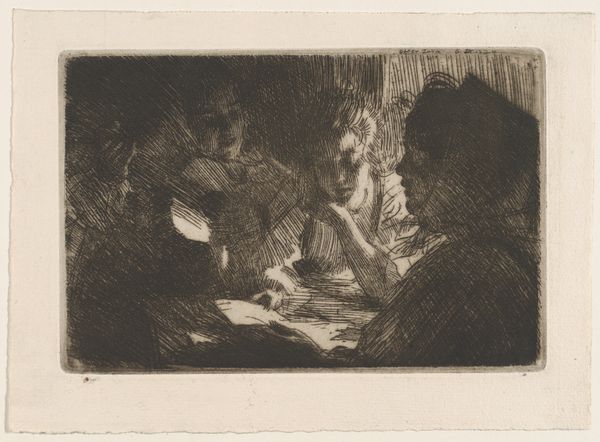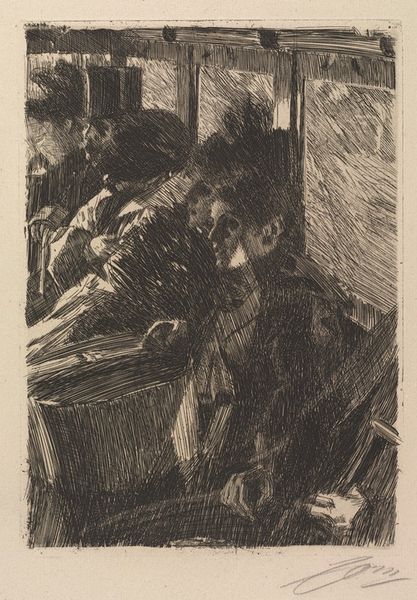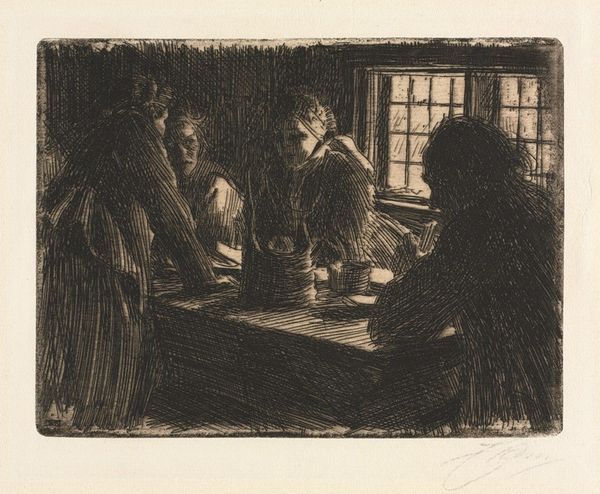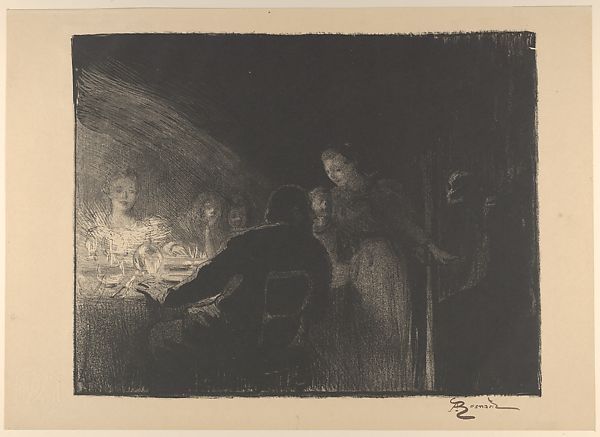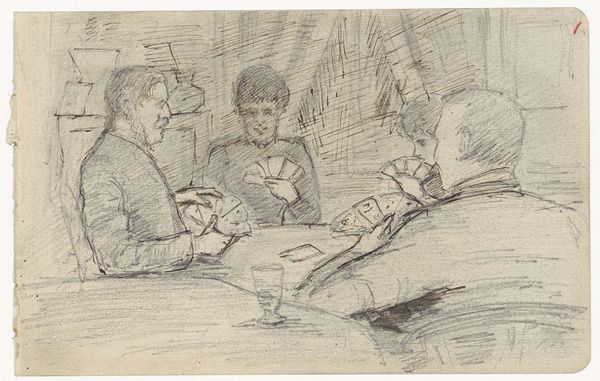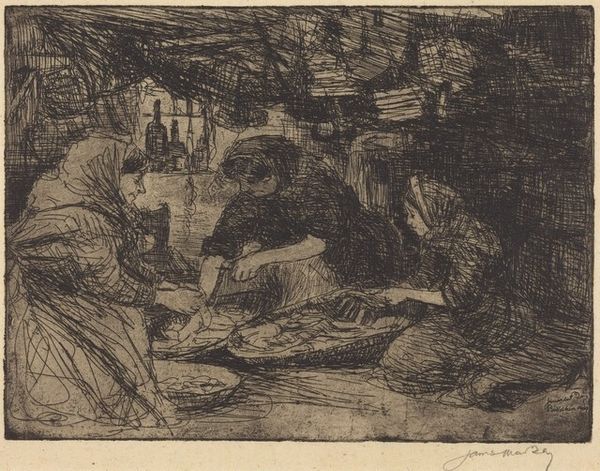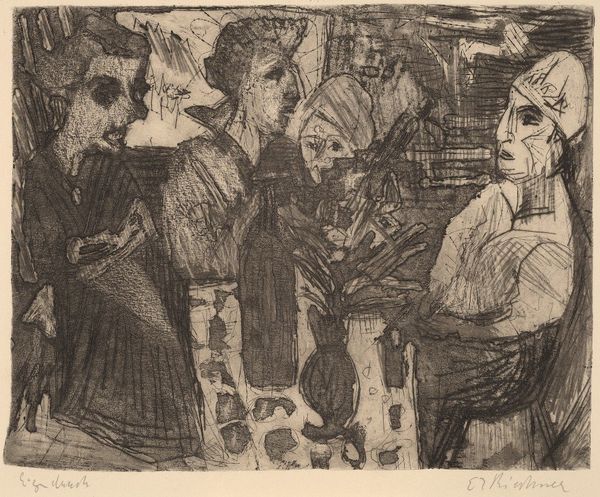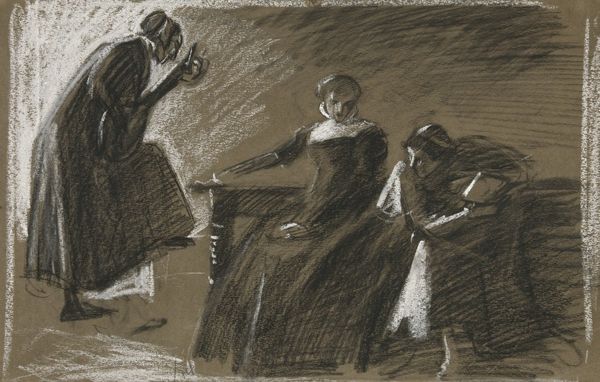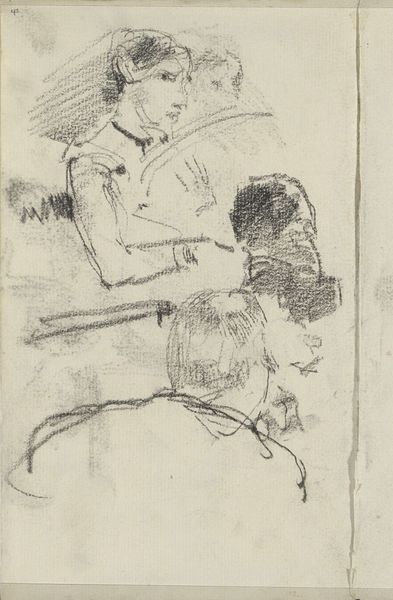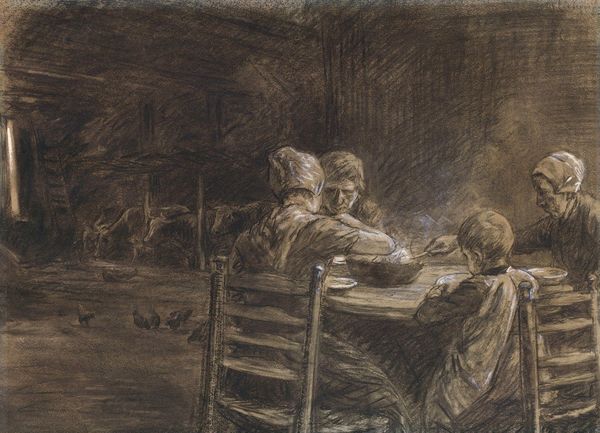
Copyright: Public Domain: Artvee
Editor: Here we have Anders Zorn’s 1903 etching, "The New Ballad." The way the light catches the central figure's face, surrounded by shadowy figures, it's quite captivating. What social dynamics do you see at play within this scene? Curator: It's a wonderful snapshot of social dynamics indeed. Think about 1903: What new ballads would people be listening to? What stories would be circulating? Consider the power of storytelling within specific communities, especially through an artistic medium like ballads. It provides cultural connection, especially for groups facing marginalization. Zorn’s choice of etching, a more accessible printmaking method, further hints at a desire for wider dissemination of these stories, don't you think? Editor: That’s fascinating! So you're suggesting that the choice of medium reinforces the democratizing potential of art and storytelling? How does the composition contribute to this idea? Curator: Precisely! Notice how some figures are cast in shadow, perhaps hinting at those whose voices were historically muted, while the central figure appears illuminated, possibly representing emergent perspectives gaining visibility through cultural mediums. This play of light and shadow, combined with Zorn's characteristic impressionistic style, draws us into a dialogue about who gets to narrate our shared experiences. What ballad might they be sharing, and whose perspective dominates? Editor: I never thought about it like that! So much more than just a genre painting, really a comment on whose stories are being heard. Thanks for helping me look closer! Curator: And thank you for making such astute observations! Analyzing art through a lens of social justice, particularly concerning which voices history amplifies, opens avenues for a deeper appreciation.
Comments
No comments
Be the first to comment and join the conversation on the ultimate creative platform.

